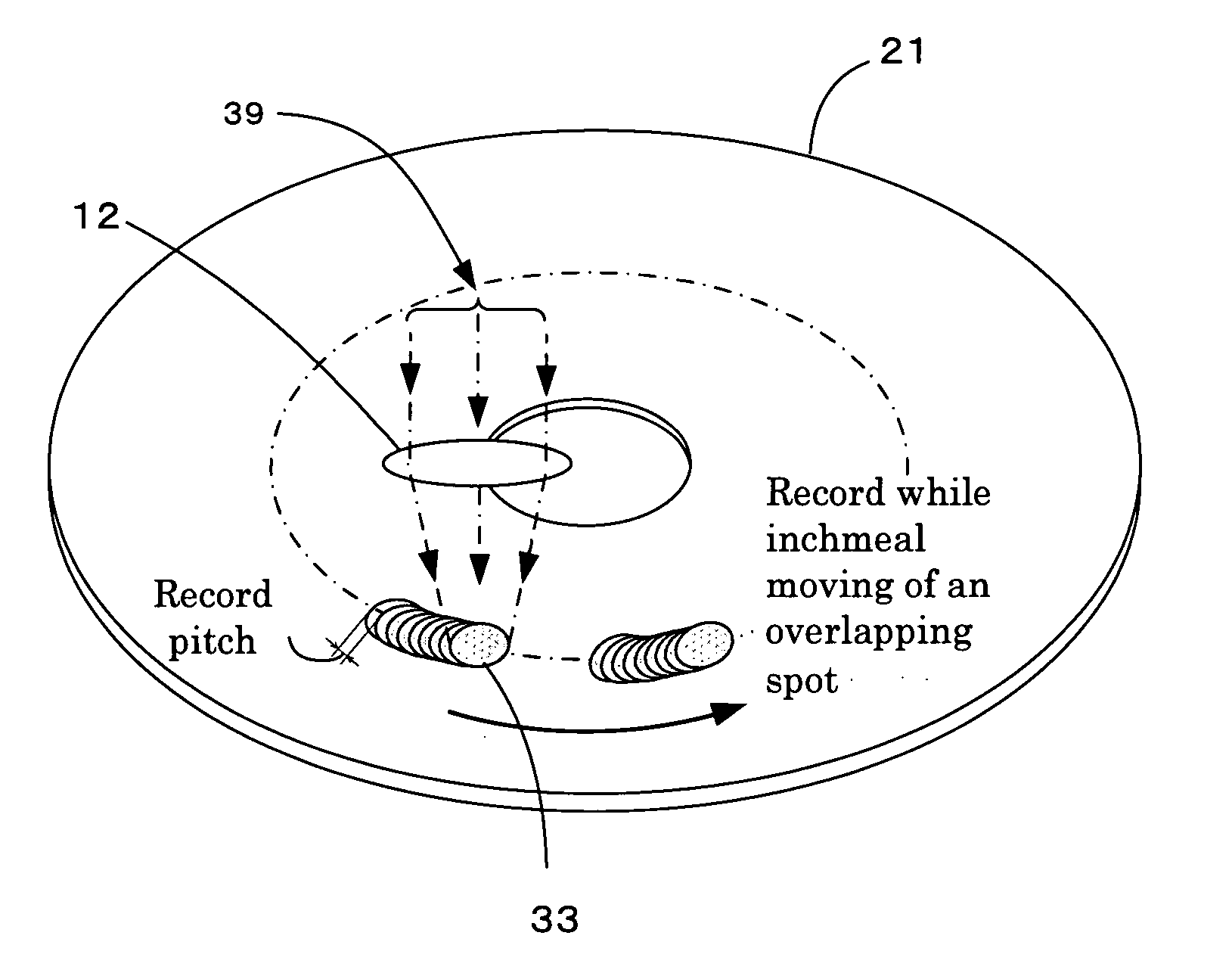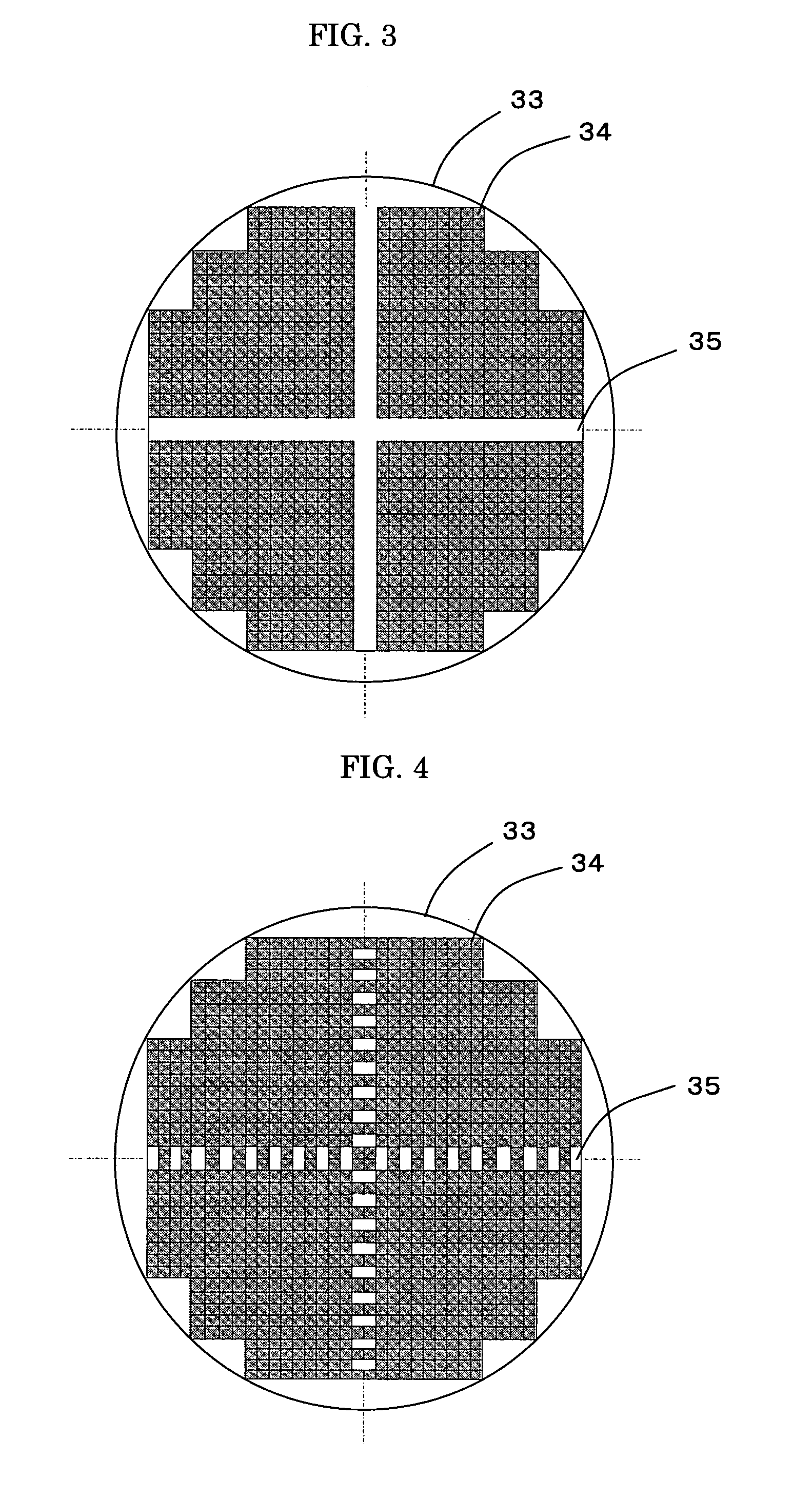Optical recording method, optical recording apparatus and optical recording medium
a recording method and optical recording technology, applied in the field of optical recording methods for recording information, can solve the problems of generating diffraction noise upon information reproduction, troublesome to distinguish data recorded in the data area over data recorded as synchronization marks, and undesired reduction of recording sensitivities of areas near specific positions, etc., to achieve high-speed digital data processing, less noise occurrence upon information reproduction, and the effect of high-multiplexing recording
- Summary
- Abstract
- Description
- Claims
- Application Information
AI Technical Summary
Benefits of technology
Problems solved by technology
Method used
Image
Examples
example 1
[0296]The optical recording medium of Example 1 was prepared in the following way by depositing, in order, a recording layer, a second gap layer, a filter layer, a first gap layer, and a second substrate on a first substrate. The filter layer was formed by preparing a film-shaped filter and depositing it on the second gap layer.
—Components in Photosensitive Composition Solution for Recording Layer—
[0297]A photosensitive composition made of the following components was stirred in a nitrogen flow to prepare a photosensitive composition solution.
Biscyclohexylmethane diisocyanate31.5 PartsPolypropyleneoxide triol (molecular weight = 1,000)61.2 PartsTetramethyleneglycol 2.5 Parts2,4,6-Tribromophenyl acrylate 3.1 PartsPhotoinitiator0.69 Parts(IRGA CURE 784, produced by Ciba Specialty Chemicals)Dibutyl tin dilaurate1.01 Parts
Preparation of Filter
[0298]Initially, polyvinyl alcohol (bland name: MP 203, produced by Kuraray Co., Ltd.) was applied on a polycarbonate film of 100 μm thickness (bl...
examples 2 to 5
[0321]As in Example 1, 50-fold multiplexing recording and single-hologram recording were conducted on optical recording media prepared in the same manner as those of Example 1, with synchronization marks arranged in different patterns given in Table 2, followed by measurement of the SNR values for each recording medium as in Example 1. The measurement results are given in Table 2.
PUM
| Property | Measurement | Unit |
|---|---|---|
| wavelengths | aaaaa | aaaaa |
| wavelength | aaaaa | aaaaa |
| wavelength | aaaaa | aaaaa |
Abstract
Description
Claims
Application Information
 Login to View More
Login to View More - R&D
- Intellectual Property
- Life Sciences
- Materials
- Tech Scout
- Unparalleled Data Quality
- Higher Quality Content
- 60% Fewer Hallucinations
Browse by: Latest US Patents, China's latest patents, Technical Efficacy Thesaurus, Application Domain, Technology Topic, Popular Technical Reports.
© 2025 PatSnap. All rights reserved.Legal|Privacy policy|Modern Slavery Act Transparency Statement|Sitemap|About US| Contact US: help@patsnap.com



